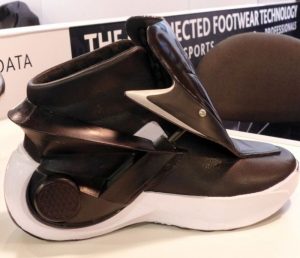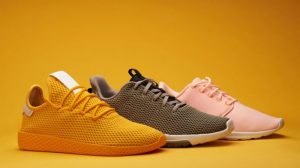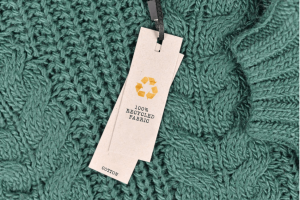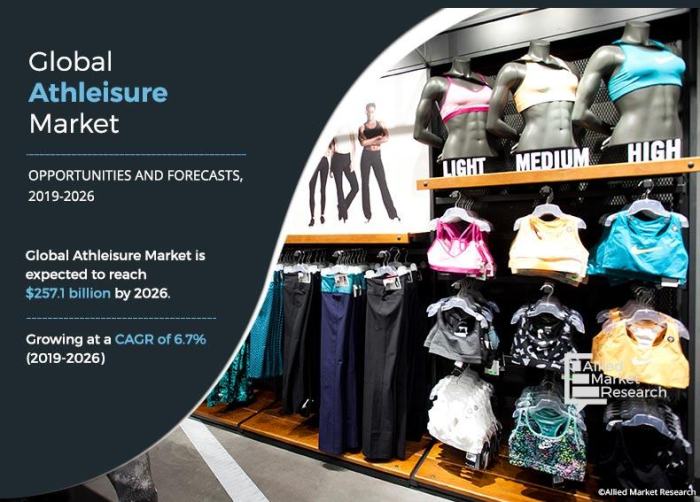
Step into the world of athleisure wear market growth where trends collide, innovations thrive, and future opportunities await. Get ready for a journey filled with insights and surprises!
The athleisure wear market has been booming with the rise of comfortable yet stylish clothing, attracting consumers from all walks of life. Let’s dive deeper into this evolving industry to uncover what makes it so popular.
Overview of Athleisure Wear Market Growth
Athleisure wear refers to clothing that is designed for both athletic activities and everyday wear, blending comfort, style, and functionality. This trend has become increasingly popular in recent years, with consumers seeking versatile and comfortable apparel options.
Current Market Trends for Athleisure Wear
- Rise of “athleisure chic”
-Athleisure wear is no longer confined to the gym but has become a fashion statement, with celebrities and influencers sporting athleisure outfits in various settings. - Innovations in fabric technology – Brands are incorporating advanced materials like moisture-wicking fabrics, compression technology, and sustainable materials to enhance performance and sustainability.
- Growth of online sales – E-commerce platforms have played a significant role in the growth of the athleisure wear market, providing consumers with easy access to a wide range of options.
- Celebrity collaborations – Collaborations between athleisure brands and celebrities or athletes have fueled interest in the market, attracting a larger consumer base.
Factors Contributing to the Growth of the Athleisure Wear Market
- Changing lifestyle preferences – Increasing focus on health and wellness has led to a greater demand for comfortable and functional clothing options.
- Rise of the wellness culture – The wellness movement has influenced consumer choices, with many opting for athleisure wear that promotes both physical and mental well-being.
- Shift towards remote work – The rise of remote work has blurred the lines between work and leisure, creating a demand for versatile clothing that can transition from home to office.
Key Players in the Athleisure Wear Market
- Lululemon – Known for its high-quality yoga and athleisure wear, Lululemon has a strong presence in the market and a loyal customer base.
- Nike – A leading sportswear brand, Nike offers a range of athleisure options that combine performance and style.
- Adidas – Another prominent player in the athleisure market, Adidas blends fashion and function in its athletic-inspired clothing.
Market Size and Forecast
Athleisure wear has seen significant growth in recent years, with the market size estimated to be around $300 billion globally. This surge in popularity can be attributed to the increasing focus on health and wellness, as well as the shift towards more casual and comfortable clothing options.
Projected Growth and Market Forecast
The athleisure wear market is expected to continue its upward trajectory, with forecasts predicting a compound annual growth rate (CAGR) of 6.7% over the next five years. This growth can be attributed to the rising adoption of athleisure wear across various age groups and demographics, as well as the increasing preference for versatile and functional clothing.
Regional Variations in Athleisure Wear Market Growth
While the athleisure wear trend has gained momentum worldwide, there are regional variations in market growth. For instance, North America currently dominates the athleisure wear market, followed closely by Europe and Asia-Pacific. Each region has its own unique preferences and trends when it comes to athleisure wear, influencing market dynamics and consumer behavior.
Consumer Behavior and Market Size
Consumer behavior plays a crucial role in shaping the market size and demand for athleisure wear. As more consumers prioritize comfort, functionality, and style in their clothing choices, the demand for athleisure wear continues to rise. Additionally, the growing focus on health and wellness has led to an increased interest in activewear that can seamlessly transition from the gym to everyday activities, further driving market growth.
Impact of Technology and Innovation
Athleisure wear market has been significantly influenced by technology and innovation, leading to rapid growth and evolution in the industry.
Technological Advancements in Materials
- Advanced fabrics like moisture-wicking materials and compression technology have revolutionized the comfort and performance of athleisure wear.
- Introduction of smart textiles embedded with sensors for tracking fitness metrics has added a futuristic touch to the market.
- 3D printing technology enables customization and intricate designs, catering to individual preferences.
Innovations in Designs and Production
- Designers are experimenting with bold colors, unique patterns, and unconventional silhouettes to create fashion-forward athleisure wear.
- Efficient production processes like automation and robotics have improved speed and quality, meeting the demands of a fast-paced market.
- Collaborations between athleisure brands and tech companies have resulted in innovative products like smart shoes and wearable tech accessories.
Role of E-commerce and Digital Platforms
- E-commerce platforms have provided a global reach for athleisure brands, allowing consumers to purchase products from anywhere at any time.
- Digital marketing strategies, including influencer collaborations and social media campaigns, have boosted brand visibility and engagement.
- Virtual try-on tools and augmented reality experiences enhance the online shopping experience, increasing consumer confidence in purchasing athleisure wear online.
Sustainability and Eco-friendly Practices
- Increasing awareness of environmental impact has driven athleisure brands to adopt sustainable practices like using recycled materials and reducing carbon footprint.
- Innovations in eco-friendly fabrics like bamboo, organic cotton, and recycled polyester offer a more sustainable alternative to traditional materials.
- Companies focusing on circular fashion models and zero-waste production processes are shaping the future of sustainable athleisure wear market.
Athleisure Wear in Fashion Industry
The integration of athleisure wear into high fashion has been a significant trend in recent years. What started as comfortable and functional activewear has now become a staple in the fashion industry, blurring the lines between sportswear and high-end fashion.
Collaborations between Athleisure Brands and Luxury Designers
Collaborations between athleisure brands and luxury designers have become increasingly common, resulting in unique and innovative collections that combine the best of both worlds. These partnerships bring together the technical expertise of athleisure brands with the luxury and sophistication of high-end fashion houses, creating a new and exciting hybrid style.
Influence of Celebrities and Influencers
Celebrities and influencers play a crucial role in shaping athleisure wear trends. Their endorsement and promotion of athleisure brands have propelled the popularity of this style, making it a must-have for fashion-conscious consumers. The influence of celebrities and influencers on social media platforms like Instagram has further cemented athleisure wear as a fashion staple.
Reshaping Traditional Fashion Norms
Athleisure wear has reshaped traditional fashion norms by introducing a more casual and comfortable approach to dressing. The rise of athleisure has challenged the conventional ideas of formal and casual attire, allowing individuals to express themselves through a more relaxed and versatile wardrobe. This shift in fashion norms has led to a more inclusive and diverse fashion landscape, where comfort and style coexist harmoniously.
Consumer Behavior and Preferences
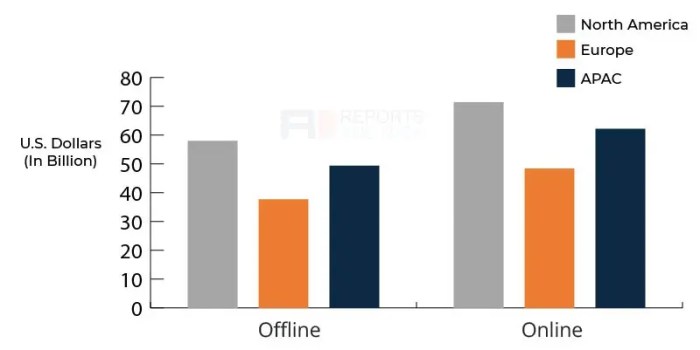
Athleisure wear has become a staple in many wardrobes, reflecting a shift in consumer preferences towards comfort and versatility in clothing choices. This trend has not only influenced the fashion industry but has also reshaped the way people approach their everyday style.
Changing Consumer Preferences
- Consumers are increasingly prioritizing comfort and functionality in their clothing choices, driving the demand for athleisure wear.
- The rise of remote work and flexible dress codes has further accelerated the adoption of athleisure as a suitable option for both work and leisure activities.
- Social media influencers and celebrities showcasing athleisure outfits have also played a significant role in shaping consumer preferences towards this style.
Target Demographic for Athleisure Brands
- Athleisure brands typically target a wide range of demographics, including millennials, Gen Z, and even older consumers looking for comfortable yet stylish clothing options.
- Youthful and active individuals seeking a seamless transition from workout to social settings are a key target audience for athleisure brands.
- With the increasing focus on health and wellness, consumers who value fitness and overall well-being are more likely to gravitate towards athleisure wear.
Factors Influencing Purchasing Decisions
- Price, quality, brand reputation, and sustainability practices are some of the key factors that influence consumers’ purchasing decisions in the athleisure wear market.
- The availability of trendy designs, innovative fabrics, and inclusive sizing options also play a significant role in attracting consumers to athleisure brands.
- Customer reviews, social proof, and endorsements from fitness enthusiasts or influencers can sway consumer decisions when choosing athleisure products.
Relationship Between Comfort, Style, and Functionality
- Athleisure wear strikes a balance between comfort, style, and functionality, offering consumers clothing that can seamlessly transition from gym sessions to casual outings.
- Technical fabrics, moisture-wicking properties, and ergonomic designs contribute to the functionality of athleisure wear, catering to consumers’ active lifestyles.
- The fusion of athleisure with high fashion elements has elevated the style quotient of activewear, making it a fashionable choice for various occasions.
Growth Opportunities and Challenges

Athleisure wear brands have a range of growth opportunities to capitalize on the increasing demand for comfortable yet stylish clothing. However, they also face challenges such as fierce competition, supply chain issues, and evolving consumer preferences. It is important for brands to strategize effectively to sustain growth in this dynamic market and stay ahead of the curve.
Growth Opportunities
- Expansion into new markets: Athleisure wear brands can explore opportunities in untapped markets, both domestically and internationally, to increase their customer base.
- Diversification of product offerings: Brands can innovate and introduce new product lines, such as sustainable athleisure wear or specialized performance-based collections, to cater to a wider range of consumer needs.
- Collaborations and partnerships: Collaborating with influencers, celebrities, or other brands can help athleisure wear companies reach new audiences and enhance their brand visibility.
Challenges
- Competition: The athleisure wear market is highly competitive, with both established players and new entrants vying for market share. Brands need to differentiate themselves and focus on unique selling propositions to stand out.
- Supply chain issues: Ensuring a smooth and efficient supply chain is crucial for athleisure wear brands to meet customer demand and maintain quality standards. Delays or disruptions in the supply chain can impact sales and brand reputation.
- Changing consumer demands: Consumer preferences and trends in the fashion industry are constantly evolving. Brands need to stay agile and adaptable to meet changing consumer demands and stay relevant in the market.
Strategies for Sustaining Growth
- Investing in R&D: Continuous research and development to create innovative designs and technologies can help athleisure wear brands stay ahead of the competition and meet evolving consumer needs.
- Enhancing online presence: With the rise of e-commerce, brands need to invest in digital marketing and online platforms to reach a wider audience and drive sales.
- Focusing on sustainability: Embracing sustainable practices in manufacturing and sourcing materials can attract environmentally conscious consumers and differentiate brands in the market.
Emerging Trends
- Smart athleisure wear: Integration of technology such as wearable sensors and smart fabrics into athleisure clothing to monitor performance and enhance the overall user experience.
- Customization and personalization: Offering customizable athleisure wear options to allow consumers to create unique pieces that reflect their individual style and preferences.
- Inclusivity and diversity: Embracing diversity in sizing, models, and marketing campaigns to cater to a wider range of body types and promote inclusivity in the athleisure wear industry.
Influence on Clothes and Shoes Industry
Athleisure wear trends have significantly impacted traditional clothing styles, blurring the lines between athletic apparel and everyday fashion. This crossover has revolutionized the clothing and footwear industry, leading to a surge in demand for versatile and multifunctional products that cater to both active lifestyles and casual wear.
Athletic Footwear vs. Casual Shoes
The market has witnessed a merging of athletic footwear features with casual shoe designs, creating a new category of stylish and functional shoes. Brands are now incorporating comfort, performance, and style elements into their footwear lines to meet the growing demand for athleisure-inspired products.
Impact on Sports Shoe Brands and Fashion Footwear
Athleisure wear has prompted sports shoe brands to expand their product offerings beyond traditional athletic shoes. Brands like Nike, Adidas, and Puma have introduced lifestyle collections that combine performance technologies with fashion-forward designs to appeal to a broader consumer base. On the other hand, fashion footwear brands have incorporated athletic elements such as breathable fabrics, cushioned soles, and sporty silhouettes into their collections to capitalize on the athleisure trend.
Shift in Consumer Preferences
Consumers are increasingly gravitating towards clothing and footwear that provide both comfort and style, driving the popularity of athleisure wear. The shift towards versatile and multifunctional products reflects changing consumer lifestyles, where individuals seek apparel and shoes that can seamlessly transition from the gym to everyday activities. This change in consumer preferences has challenged traditional fashion norms and propelled the athleisure trend to the forefront of the industry.
Final Thoughts
As we conclude our exploration of the athleisure wear market growth, one thing is certain – this industry shows no signs of slowing down. With a blend of technology, fashion, and consumer preferences, the future looks bright for athleisure wear brands.
Common Queries
How has technology influenced the athleisure wear market?
Technology has played a significant role in shaping the athleisure wear market, from innovative fabrics to seamless production processes.
What factors contribute to the growth of the athleisure wear market?
The increasing demand for comfortable yet stylish clothing, along with the rise of health and wellness trends, has been major contributors to the growth of the athleisure wear market.
Are collaborations between athleisure brands and luxury designers common?
Yes, collaborations between athleisure brands and luxury designers have become increasingly popular, blurring the lines between high fashion and activewear.
How do consumer preferences impact the athleisure wear market?
Consumer preferences play a crucial role in shaping the athleisure wear market, influencing everything from design choices to marketing strategies.
What are some growth opportunities for athleisure wear brands?
Growth opportunities for athleisure wear brands include expanding into new markets, focusing on sustainability, and leveraging digital platforms for increased visibility.

.jpg?w=700)
